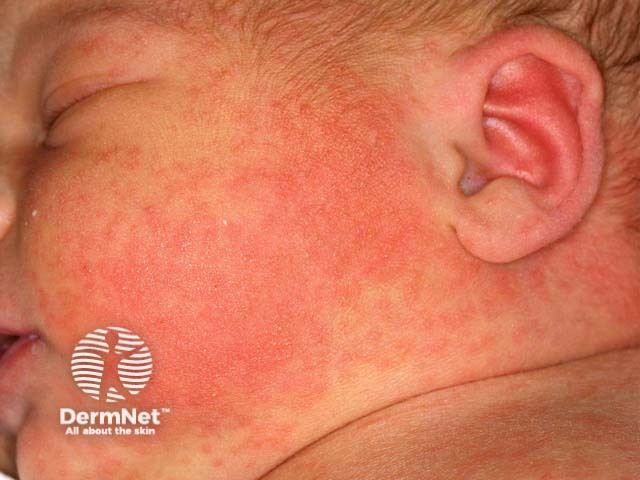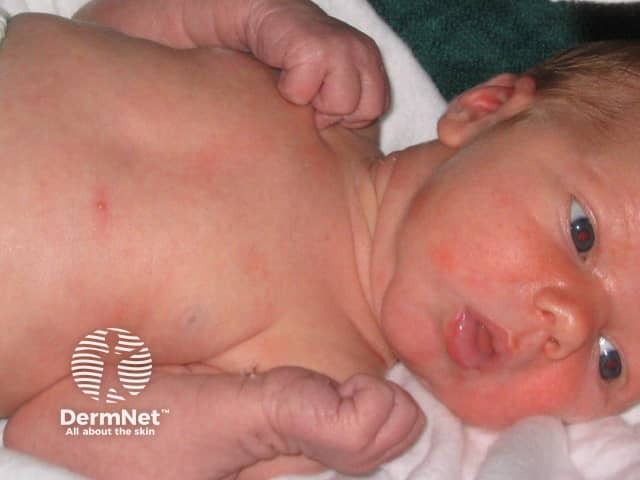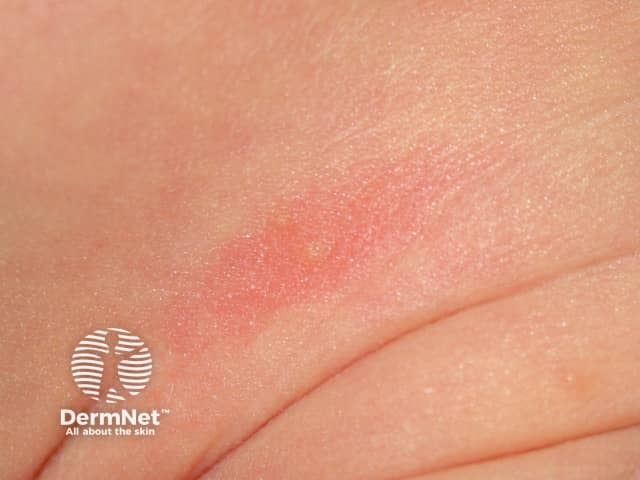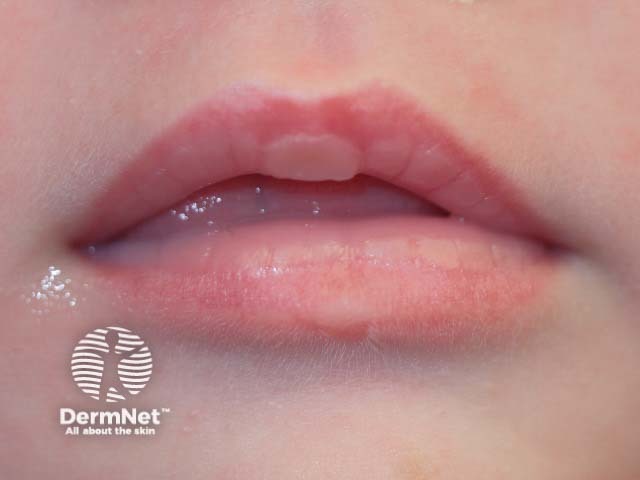Main menu
Common skin conditions

NEWS
Join DermNet PRO
Read more
Quick links
Skin conditions in newborn babies — extra information
Skin conditions in newborn babies
Author: Dr Amanda Oakley, Dermatologist, Hamilton, New Zealand, 2009.
Introduction
Toxic erythema of newborn
Miliaria
Milia
Sucking and suckling blisters
Introduction
A large number of conditions can cause vesicles (small blisters), pustules (yellow blisters), bullae (big blisters), erosions (sores) and ulcerations during the newborn period. The most common are toxic erythema of the newborn (also known as ‘erythema toxicum neonatorum’) and miliaria. Other conditions to consider include:
- Infections
- Bacteria: staphylococci (impetigo), streptococci (boils); rarely listeria, haemophilus, pseudomonas, syphilis
- Fungi: candida (thrush), malassezia
- Viruses: herpes simplex (cold sores), varicella (chickenpox)
- Infestations: scabies
- Neonatal cephalic pustulosis (papules and pustules on the face and upper chest)
- Congenital Langerhans cell histiocytosis (crusted papules and petechiae)
- Incontinentia pigmenti (blisters and scaling in a linear or whorled array along the lines of Blaschko)
Toxic erythema of newborn
The eruption known as toxic erythema of the newborn affects 50% of full-term neonates but is uncommon in premature babies. It arises in the first few days and presents with scattered pink or red marks often with papules (small bumps) and weals scattered over face and the rest of the body. The lesions are transient. Toxic erythema spares the palms and soles. It does not bother the baby. It resolves spontaneously over one to two days.
Transient neonatal pustular melanosis may be a severe variant of toxic erythema of the newborn in which pustules are present. It's present at birth.
If investigations are thought necessary, microscopy of a pustule may show eosinophils (a type of white blood cell). In contrast, neutrophils (another type of white blood cell) are characteristic of transient neonatal pustular melanosis, which only affects dark-skinned babies. It may be appropriate to culture the lesions for bacteria, candida and herpes virus.

Toxic erythema of the newborn

Toxic erythema of the newborn

Toxic erythema of the newborn
Miliaria
Miliaria affects about 15% of newborn babies in warm climates and is due to blockage (occlusion) of the sweat duct. If the occlusion is superficial, sweat collects just below the stratum corneum (dead cells on the skin surface) forming clear, thin-walled blisters (miliaria cristallina). Slightly deeper occlusion results in red papules and pustules (miliaria rubra or ‘prickly heat’).
Miliaria most often affects the forehead, neck and upper trunk and occluded areas of babies in the first few weeks of life. It settles within a few days on cooling and removing occlusive clothing.
Milia
Milia are tiny white spots due to accumulation of sweat in blocked pores. About 50% of infants have milia on the face, most resolving within the first 4 weeks of life. Milia in newborns may also occur on the hard palate (Epstein pearls) or on the gum margins (Bohn nodules). These also resolve spontaneously.

Sucking and suckling blisters
Sucking blisters are caused by vigorous sucking by the infant whilst still in the womb. Intact blisters or erosions may be found on the forearm, wrist, hands or fingers. They resolve within a few days.
Suckling ‘blisters’ are firm swellings on the upper lip and are a hyperplastic response to suckling.

Suckling blister
On DermNet
- Birthmarks
- Blisters and pustules in neonates
- Eosinophilic pustular folliculitis of infancy
- Toxic erythema of the newborn
- Transient neonatal pustular melanosis
- Neonatal cephalic pustulosis
- Miliaria
- Milia
- TORCH infections
- Listeriosis
Other websites
- Erythema toxicum — Medscape Reference
